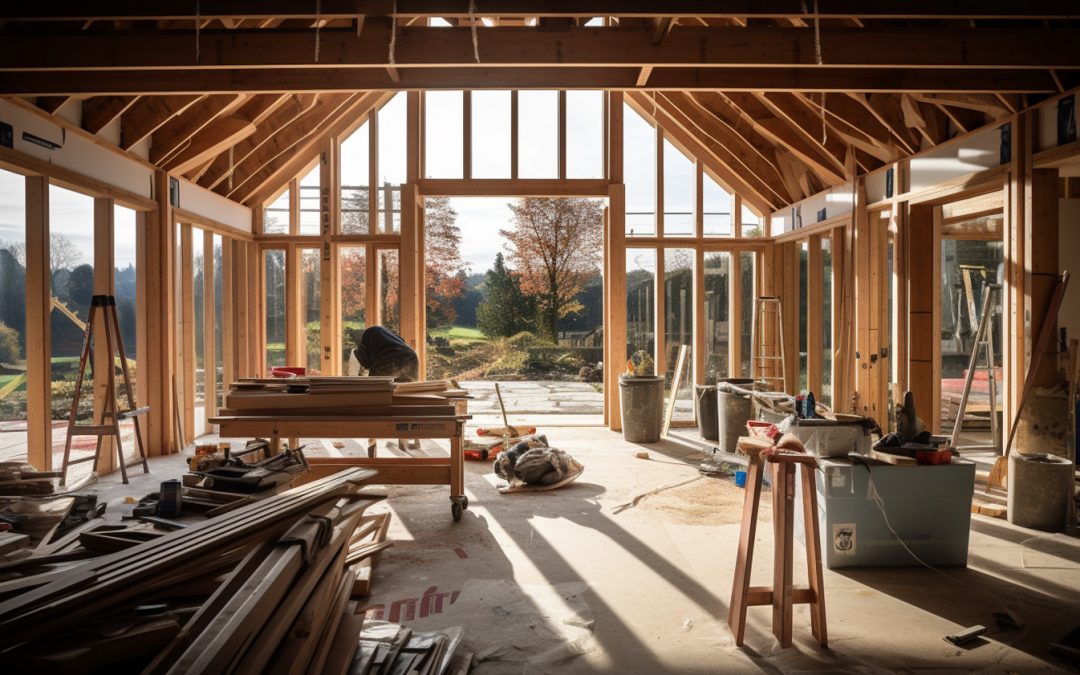When it comes to constructing a new home or purchasing one, the question of construction material pops up, bringing with it a whirlpool of considerations. The most common debate is between timber frame and traditional brick or block construction. Each has its own set of merits and demerits that can significantly affect your living experience and long-term maintenance costs. In this post, we delve into the distinctive features, advantages, and disadvantages of these two popular construction methods, providing you with a comprehensive understanding to make an informed decision.
Identifying the Build: Timber or Brick?
Timber Frame Construction:
- Wooden Structure: The hallmark of timber-framed homes is the wooden framework often visible within the walls. The sight of large wooden beams and posts is common in these constructions.
- Exterior Appearance: Although clad with a variety of materials like bricks, stucco, or siding, the wooden frame may peek through, giving away its construction secret.
- Historical Hint: Older timber-framed homes often showcase exposed wooden beams on the interior, lending a rustic charm.
Traditional Brick/Block Construction:
- Solid Walls: In contrast, traditional brick or block homes boast solid masonry walls made from bricks, concrete blocks, or stone.
- Wood-Free Interior: Unlike timber frame constructions, you won’t find any exposed wooden beams or posts on the interior walls.
- Consistent Exterior: The exterior usually presents a uniform appearance with bricks or blocks forming the visible structure, exuding a sense of solidity.
Weighing the Pros and Cons
Timber Frame Construction
- Advantages
- Energy Efficiency: Well-insulated timber frame homes offer commendable energy efficiency, ensuring a snug environment.
- Flexibility: Modifying or extending a timber frame house is relatively easier thanks to the lightweight frame.
- Speedy Construction: The lightweight nature also accelerates the construction process compared to traditional brick homes.
- Disadvantages
- Maintenance: The wooden structure necessitates regular maintenance to ward off rot and pests.
- Fire Risk: Being flammable, timber poses a higher fire risk compared to masonry.
- Perception: Some buyers are inclined towards the perceived solidity and longevity of brick/block homes.
Traditional Brick/Block Construction:
- Advantages
- Durability: The robustness of brick/block homes promises excellent longevity.
- Fire Resistance: The high fire resistance provides a safer living environment.
- Low Maintenance: Requiring less upkeep, these homes are time-saving in the long run.
- Disadvantages
- Insulation: Additional insulation might be required to achieve desired energy efficiency levels.
- Costly Modifications: Making structural changes or additions can be a pricey and challenging task.
- Slower Construction: The heavier materials extend the construction timeframe.
The debate between timber frame and traditional brick/block construction boils down to personal preferences, budgetary constraints, aesthetic desires, and energy efficiency goals. Each construction type comes with its own set of advantages and challenges. Whether you’re drawn towards the rustic charm and flexibility of timber or the enduring strength and low maintenance of brick, understanding the fundamentals of both construction methods will empower you to make a well-informed decision in your home building or buying journey.




